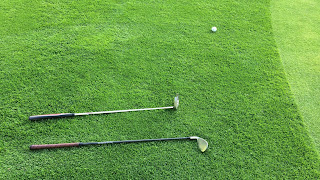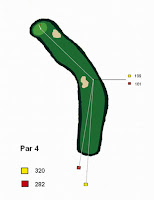Why does golf sometimes seem intimidating to newcomers - is it because of all the technical jargon and rules? Do beginners and most amateurs feel pressured when playing with others? Sometimes, a fresh perspective from someone who isn’t immersed in the sport can provide valuable, simple, and relatable advice. Here are a few beginner golf tips inspired by insights from non-golfers. I suggest that golfers who have been playing for many years read this as well as we sometimes forget that golf is supposed to be enjoyable and relaxing as well as a test of our skills! And, why not ask your friends, the ones who don't play golf, why they haven't picked up the sticks? You might just uncover ideas that can change your mind about the sport.
1. Keep It Fun
When you’re just starting out, it’s easy to get bogged down by technique and trying to hit perfect shots. Non-golfers often remind us to keep things fun and not take the game too seriously. Approach your practice sessions and rounds with a sense of humor and enjoyment. Remember, golf is as much about the experience as it is about the score.
2. Don’t Overthink It
Overthinking can be a big trap in golf. Non-golfers suggest adopting a more relaxed attitude. Instead of analyzing every aspect of your swing or strategy, try to stay loose and just enjoy the flow of the game. Sometimes, simplicity can lead to better results.
3. Dress Comfortably
Non-golfers might not know the latest trends in golf fashion, but they do know that comfort is key. Make sure your clothing is not only appropriate for the course but also comfortable and allows you to move freely. If you’re comfortable, you’re more likely to play well.
4. Take Breaks
Many non-golfers stress the importance of taking breaks, especially during activities that require focus and patience, like golf. Don’t be afraid to step back, take a breather, and relax between holes or after a tough shot. This can help reset your mind and keep you from getting too frustrated.
5. Enjoy the Outdoors
Golf courses are often set in beautiful locations, and non-golfers might remind you to take in the scenery. Enjoy the fresh air, the green grass, and the overall environment. It’s not just about playing the game; it’s also about enjoying the time spent outdoors.
6. Be Patient with Yourself
Non-golfers can be great at reminding us to be patient. Golf is a challenging sport that takes time to master. Don’t be too hard on yourself if you’re not hitting perfect shots right away. Improvement comes with time, practice, and patience.
7. Play with Friends
Even if they don’t play golf themselves, non-golfers might suggest that you make the game social. Playing with friends can make the experience more enjoyable and less intimidating. Plus, it’s a great way to spend time with others and share laughs, even if your game isn’t perfect.
8. Try Different Clubs
Non-golfers might suggest experimenting with different tools until you find what works best for you. In golf, that means trying different golf clubs to see which ones you’re most comfortable with. Don’t feel like you have to use every club in your bag—focus on the ones that feel right.
9. Start Small
Non-golfers might suggest that you don’t need to start with 18 holes or aim for a perfect round. Start small, perhaps with a shorter course or even just practicing your swing. Build up your confidence gradually.
10. Don’t Be Afraid to Ask for Help
Non-golfers often remind us that it’s okay not to know everything right away. Don’t hesitate to ask for help from more experienced players, watch tutorials, or read beginner guides. Everyone starts somewhere, and asking questions is a great way to learn.
READ: Advice for the Average Golfer
These tips from a non-golfer’s perspective can be incredibly refreshing for beginners. They remind us that golf, while complex, is still a game meant to be enjoyed. Keep these in mind as you start your golfing journey, and you might find yourself falling in love with the game even more.



















